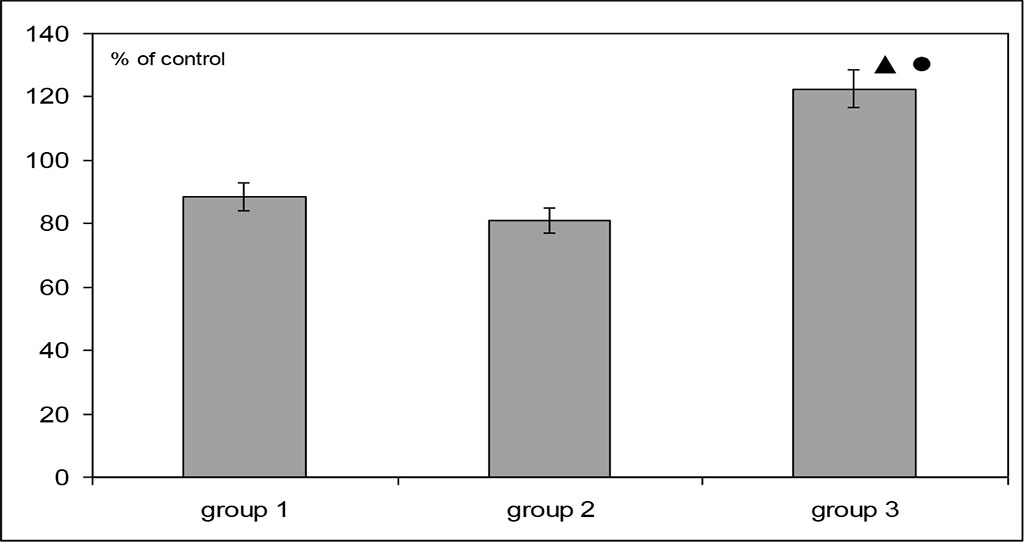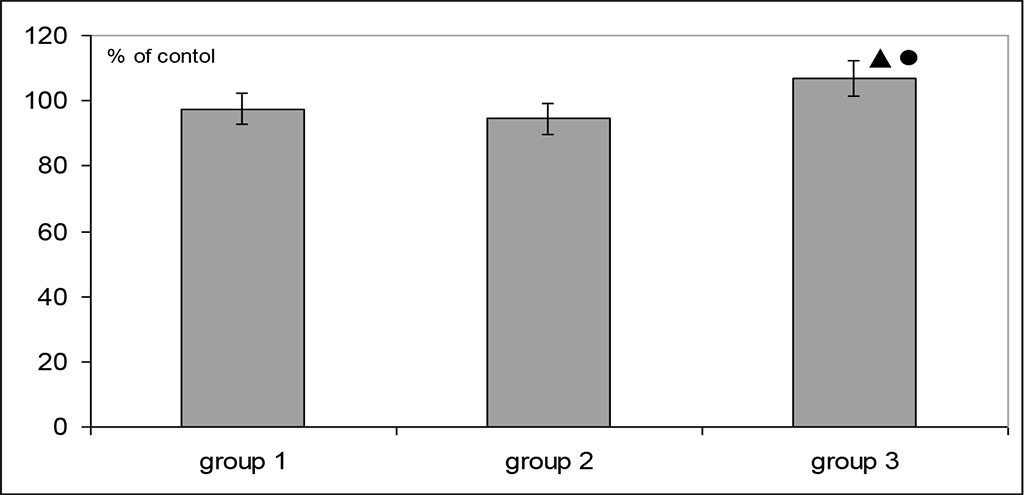- Home
- About the Journal
- Peer Review
- Editorial Board
- For Authors
- Reviewer Recognition
- Archive
- Contact
- Impressum
- EWG e.V.
Cite as: Archiv EuroMedica. 2022. 12; 4: e1. DOI 10.35630/2199-885X/2022/12/4.3
The aim of the work was to assess the state of oxidative blood metabolism in patients with burns in the dynamics of the use of antioxidant therapy and hyperbaric oxygenation. The study included 25 patients with I-II-III degree burns of various localization (lesion area - over 25% of the body surface), randomized into 3 groups: standard therapy (n=10); addition of standard therapy with antioxidants (n=10); use of the combination "antioxidants – hyperbaric oxygenation (n=5)". It was found that the combined use of hyperbaric oxygenation and antioxidants in burn victims makes it possible to most effectively stop signs of oxidative stress, as indicated by a decrease in the intensity of free radical oxidation against the background of an increase in antioxidant potential (total antioxidant activity, glutathione reductase activity).
Keywords: burn injury, free radical oxidation, antioxidants, hyperbaric oxygenation
Tissue damage during thermal trauma leads to an increase in the formation of free radicals, hypoxia and depletion of antioxidant protection, the development of a systemic inflammatory response, endothelial dysfunction, microcirculation disorders and multiple organ failure [1]. An important factor in high mortality in burns is the development of oxidative stress (OS), which occurs as a result of an imbalance between the formation and neutralization of free radicals. In addition, OS plays an important role in the development of organ dysfunction, as well as in the formation of edema after burn injury [2, 3, 5, 10]. The use of antioxidants in burns has a protective effect in oxidative tissue damage and organ failure [12]. The effect of hyperbaric oxygenation (HBO) in patients with burns provides an improvement in the gas exchange of body tissues with subsequent activation of metabolic processes and a decrease in the intensity of inflammatory reactions [4, 6]. In addition, due to tissue hyperoxygenation, HBO contributes to maintaining the activity of antioxidant protection at a sufficient level [7-9, 13]. An additional factor in stimulating the enzymatic and non-enzymatic links of the antioxidant defense of the body is the appointment of drugs with antioxidant activity, but their combination with HBO has not been studied before. The aim of the work was to assess the state of oxidative blood metabolism in patients with burns in the dynamics of the use of antioxidant therapy and hyperbaric oxygenation.
The study included 25 patients with burns of I-II-III degrees of various localization (the affected area is more than 25% of the body surface). The age of patients is from 20 to 87 years. Informed consent was obtained from all patients to conduct the study. The study was approved by the local ethics committee of the Privolzhsky Research Medical University. The first group consisted of 10 patients who were treated with standard methods of treatment of thermal lesions. The second group consisted of 10 patients who additionally received a course of antioxidant therapy (parenteral administration of cernevit and addamel H). The third group included 5 patients with combination therapy (standard therapy + antioxidant therapy + HBO sessions). The course of HBO was 8-10 daily sessions in the 1.3 ATA mode for 50-60 minutes in the pressure chambers BLKS-30, BLKS-307/1. In the blood plasma and erythrocytes of patients, the activity of free radical oxidation (FRO) processes was studied by the method of Fe-induced biochemiluminescence on a biochemiluminometer «BHL-10» (N.Novgorod). The concentration of malonic dialdehyde (MDA) in erythrocytes was measured by the method [12]. FRO in plasma and erythrocytes, the level of total antioxidant activity in blood plasma, and the activity of erythrocyte glutathione reductase were also evaluated.
The results of the conducted studies confirm the literature data that thermal trauma is accompanied by activation of FRO processes [9, 13]. It was shown that on the 7th day after treatment of patients of all the studied groups, the concentration of MDA of erythrocytes significantly exceeds the control values (Fig. 1).

Figure 1. Dynamics of malonic dialdehyde concentration in erythrocytes of patients with burns depending on the type of treatment (* - values are statistically significant compared to the control, p<0.05; * - values are statistically significant compared to group 1, p<0.05)

Figure 2. Dynamics of the total antioxidant activity of blood plasma of patients with burns depending on the type of treatment (* - values are statistically significant compared to the control, p<0.05; * - values are statistically significant compared to group 1, p<0.05; ● - values are statistically significant compared to group 2, p<0.05)
We noted that the level of MDA of erythrocytes in patients of groups 2 and 3 significantly decreases by 40%, while in group 3 (the use of HBO therapy) a tendency to even a greater decrease in the concentration of MDA.

Figure 3. Dynamics of erythrocyte glutathione reductase activity in patients depending on the type of treatment (* - values are statistically significant compared to the control, p<0.05; * - values are statistically significant compared to group 1, p<0.05; ● - values are statistically significant compared to group 2, p<0.05)
The use of HBO therapy contributes to a statistically significant increase in the OAA index of patients with thermal trauma who received not only standard therapy, but also a course of antioxidant therapy (Fig. 2). The level of glutathione reductase changes in a similar way (Fig. 3).
It was found that the combined use of hyperbaric oxygenation and antioxidants in burn victims makes it possible to most effectively stop signs of oxidative stress, as indicated by a decrease in the intensity of free radical oxidation against the background of an increase in antioxidant potential (total antioxidant activity, glutathione reductase activity).